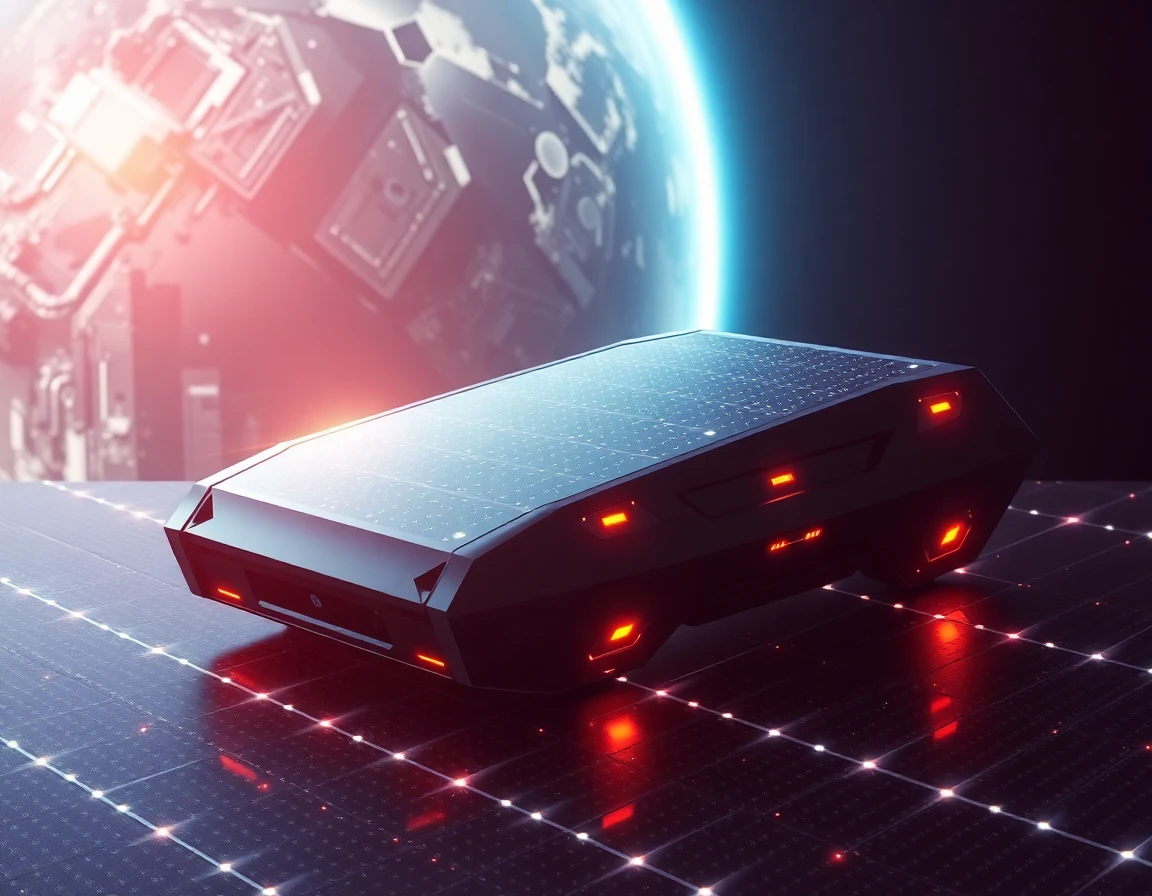As the world seeks sustainable energy solutions, space solar power (SSP) emerges as a promising frontier. Recent developments, particularly China’s ambitious initiative to build a space solar power plant, highlight the rapid advancements in this technology and the significant implications for the aerospace and defense sectors.
The Launch of China’s Space Solar Power Plant
In October 2025, China officially launched its groundbreaking project: a space solar power plant positioned 36,000 kilometers in geostationary orbit. This plant aims to capture solar energy continuously, 24/7, and transmit it wirelessly back to Earth. Described as the most ambitious energy project in history, it represents a pivotal step toward operational SSP systems that could provide a near-unlimited supply of clean energy.
The scale of this project is monumental, requiring advanced satellite technology and robust infrastructure. By harnessing solar power in space, the plant could potentially eliminate challenges related to atmospheric interference that terrestrial solar energy solutions face.
Caltech’s Microwave Array for Power-transfer Low-orbit Experiment (MAPLE)
Further solidifying the feasibility of SSP, Caltech’s MAPLE has demonstrated wireless power transmission from space to Earth. Since its initial success in 2023, recent studies have focused on enhancing the technology, which involves converting solar energy into microwave or laser signals for transmission.
While the technical aspects of wireless power transmission have been validated, logistical constraints remain a significant hurdle. These include maintaining proper satellite spacing to avoid collisions and ensuring that ground infrastructure can accommodate the incoming power.
Technical Feasibility and Challenges
According to experts, the primary challenges of SSP deployment are more related to orbital management and ground grid capacity than the technology itself. For instance, satellite constellations must maintain specific angular distances to mitigate risks of collisions and radio interference. Moreover, power integration into existing energy grids requires extensive upgrades, especially to handle the unique characteristics of energy received from space.
European Space Agency’s Solar Storm Simulation: Assessing Risks
As the SSP technology progresses, so does the need for robust risk assessments. The European Space Agency (ESA) conducted a severe solar storm simulation to evaluate the vulnerabilities of satellites involved in SSP. The exercise revealed that extreme solar weather events, such as a Carrington-level solar storm, could severely impact satellite operations and energy transmission reliability.
The ESA’s findings emphasize the need for enhanced space weather monitoring systems and protective measures for SSP infrastructure. As the technology evolves, it will be crucial to mitigate these risks to ensure the reliability of energy transmission from space.
Advancements in Wireless Power Transmission Technologies
The technological underpinnings of space solar power are advancing rapidly. Recent breakthroughs in lightweight materials and satellite technology, combined with innovations in wireless power transmission, are making SSP increasingly feasible. Notably, systems like the ZQXXSGDSS high-performance single-tube PIN quadrant detectors are critical for precise laser beam positioning and tracking applications essential for energy transmission.
Additionally, the integration of advanced sensor modules, such as the High-Precision Advanced Navigation System, which utilizes fiber optic sensing coils, can significantly enhance the stability and accuracy of satellite positioning in orbit.
Looking Ahead: The Future of Space Solar Power
As China moves forward with its large-scale SSP project, the potential for commercialization of this technology grows. The implications are vast—not only could SSP provide a continuous source of clean energy, but it could also play a crucial role in global energy security and sustainability.
However, the journey to practical deployment is fraught with challenges. The need for advanced systems like thermal battery systems to store and manage power efficiently, combined with the resilience against space weather threats, will be paramount.
Conclusion
The advancements in space solar power technology signify a critical turning point in the quest for renewable energy sources. With significant investments from countries like China, and ongoing research from institutions like Caltech and ESA, SSP is poised to become a cornerstone of future energy strategies. As we look to the stars, the promise of harnessing solar energy beyond our atmosphere could very well redefine our approach to energy consumption on Earth.
References
-
China launches the most ambitious energy project in history: a space solar plant 36,000 km from Earth (noticiasambientales.com) - 10/28/2025
-
‘No spacecraft would survive’: Europe simulates catastrophic solar storm to warn of real risks (www.space.com) - 10/27/2025 Europe has just run its most extreme space weather simulation yet — a scenario so severe that no spacecraft was left unscathed in the exercise. The European Space Agency (ESA) staged the exercise at its mission control center in Darmstadt, Germany, to test how its satellites and operations teams wou…
-
11Alive News - Solar space cell testing (10/27/25) - YouTube (www.youtube.com) - 10/27/2025 11Alive News: The Take | Solar space cell testing (10/27/25) … How space-based solar power can save the planet | FT. Financial Times …
-
Constraints on solar power satellites are more ground-based than space-based, says study (phys.org) - 10/20/2025 Space-based solar power has been gaining more and more traction recently. The recent success of Caltech’s Space Solar Power Project, …
-
A Glimpse at the Future of Space-Based Solar Power (www.nrucfc.coop) - 8/11/2025 Space-based solar power is being explored by scientists as a solution to deliver energy from orbital solar arrays back down to Earth.



